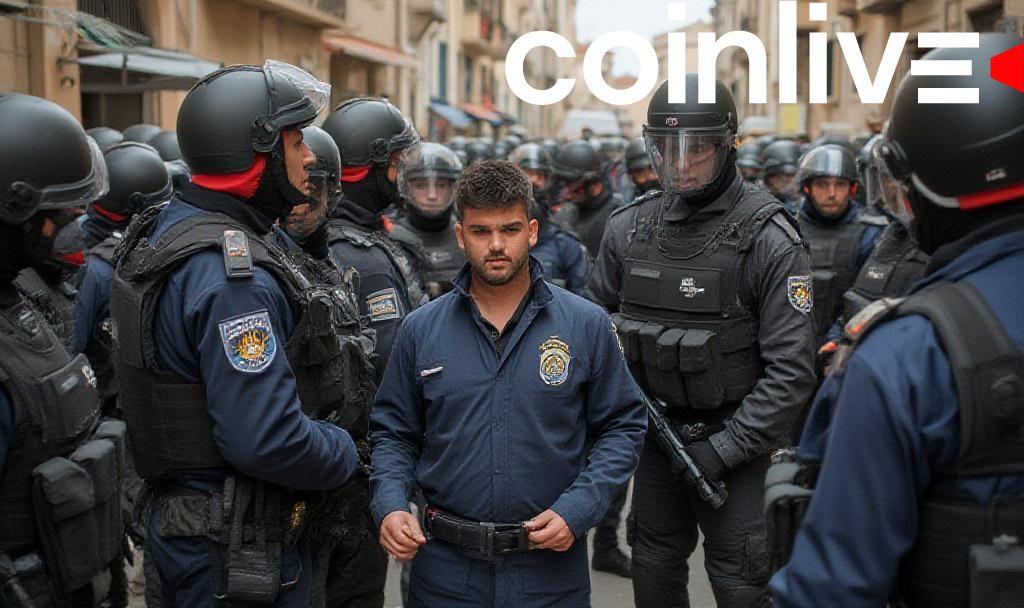- Suspect arrested in Morocco linked to French crypto kidnappings.
- Involves high-profile crypto entrepreneurs.
- Highlights urgent need for enhanced security.
Badiss Mohamed Amide Bajjou, a 24-year-old dual French-Moroccan national, was arrested in Tangier by Moroccan police, suspected of orchestrating violent crypto-related kidnappings in France.
The incident underscores the urgent need for reinforced security measures across the crypto industry, particularly as entrepreneurs face increasing threats. Immediate market reactions remain minimal, though concerns about risk management are expected to grow.
Kidnapping Details and Arrest
Badiss Mohamed Amide Bajjou was arrested following a series of violent kidnappings targeting crypto entrepreneurs in France. The arrest was conducted by Moroccan police in Tangier, highlighting international legal collaboration. French authorities requested an Interpol notice leading to this result.
Impact on Individuals and the Crypto Market
Key figures involved include Ledger’s co-founder David Balland, who suffered severe injuries, and targets linked to prominent crypto firms. The charges involve organized crime, money laundering, and aggravated violence, impacting high-net-worth crypto holders directly.
Despite the scale of the crimes, there appears to be no immediate financial impact on cryptocurrency markets. Institutional responses remain limited, and no significant asset movements have been reported. This suggests a contained impact on broader financial systems.
Gérald Darmanin, Interior Minister of France, said, “I would like to thank Morocco for the excellent judicial cooperation between our two countries.”
Security consultations and heightened awareness among founders are set to increase, reflecting the growing concerns in the aftermath of these incidents. Crypto communities may adopt new risk protocols.
Future Security Considerations
France’s rising risk for physical crypto-related attacks signals potential consequences for investor confidence and technical safeguards. Historical trends indicate a need for enhanced regulatory frameworks in safeguarding crypto assets and protecting stakeholders from escalating threats.
